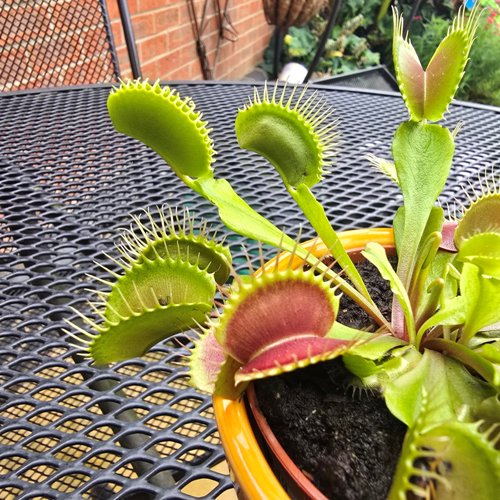Tigger's Green Paw
Venus Fly Trap
Animal Safety: Dogs: No Cats: No Rabbits: No
Free Grazing: No. Although not highly poisonous, the Venus Fly Trap could have compounds that could upset an animal’s stomach.
The Venus Fly Trap was first around approximately 65 million years ago.
It originates from the subtropical wetlands of the East Coast of the United States, specifically within a limited area of North and South Carolina.
In 1768 live specimens were first brought from the Carolinas to England by botanists like William Young, who showed it to botanist John Ellis, who recognised it as a carnivorous plant
Venus flytraps evolved in nutrient-poor bogs and are sensitive to minerals.
You can grow a Venus flytrap from seed, but it is a slow and challenging process that can take several weeks, and it may take several years for a seedling to grow into a mature plant.
They flower every spring after they mature, producing a cluster of small, white flowers on a tall stem.
A Venus flytrap plant typically grows to a total size of 6-12 inches (15-30 cm) in diameter, with individual traps measuring 1-2 inches (2.5-5 cm). However, size varies significantly based on the cultivar and growing conditions
The traps are evolved leaves that fold closed with spines along the edges that help to keep the trapped insect inside. The red inner of these evolved leaves secrete nectar to attract insects. There are hairs on the inside of the leaves that the plant uses to feel when an insect is inside and know when to close the trap. It can take up to 12 days for the plant to digest a single insect, depending on the size.
Most plant have 4 to 12 traps, with a really healthy plant having up to 20.
A Venus flytrap's individual traps only function for a short time, but the plant itself can producing new traps and divisions from its root system. Therefore, potentially surviving indefinitely. 


